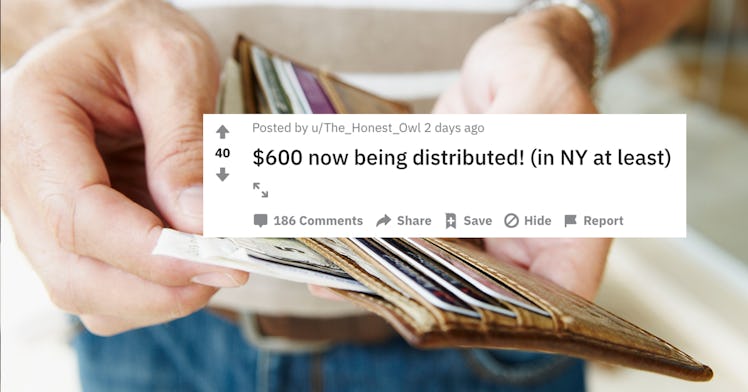Additional COVID-19 Unemployment Benefits Are Coming. But It Depends On Where You Live
Here's what you need to know about the increased unemployment benefits in the CARES Act.

Part of the federal government’s response to the economic crisis spawned by the coronavirus is direct assistance paid out to Americans in two different ways: payments to those under certain income thresholds and a temporary increase in unemployment benefits — $600 per week for up to four months — for the millions newly out of work.
Implementation of the former is relatively straightforward, as it happens in-house at the Department of the Treasury. Unemployment insurance, on the other hand, is a program run jointly by federal and state governments, which means it will be implemented differently in every state. Each will have its own timeline, creating a situation that’s understandably confusing for the folks in line to receive this money.
When will unemployed workers start to receive the extra funds?
Unemployed workers in New York appear likely to get the added funding soonest, with the state Department of Labor spokeswoman telling CNN that the extra money will start to go out this week. It will start going out to Georgia’s and Missouri’s unemployed workers next week and Indiana’s the week after that.
Other states are still working on how to distribute the money, which is desperately needed by the unprecedented number of people who are newly and suddenly out of work.
Will the additional funds be retroactive?
Those currently receiving unemployment benefits will receive $600 per week for the time they’ve been receiving unemployment benefits since the date of their eligibility or the date their state signed an agreement with the federal government, whichever is more recent.
This means that workers will ultimately receive the money owed to them even if their state lags in implementation.
What about independent contractors, the self-employed, and gig workers?
Unfortunately, the CARES Act’s extension of benefits to independent contractors (including gig workers) and the self-employed is another big source of confusion. States have the option, not the requirement, to do so, and if they do it’s complicated. Instead of simply juicing the existing system with extra funds, it means creating new eligibility and verification requirements for people not normally covered by these programs.
“There’s a huge difference between modifying our current unemployment system or process to include the $600 federal benefit for those already eligible and creating an entirely new system for a totally new class of covered workers,” Fred Payne, commissioner of the Indiana Department of Workforce Development, said.
That’s a big lift for bureaucrats, but save your sympathy for the workers in dire straits forced to navigate a system shaped by a political party seemingly more interested in ensuring no ineligible worker is “overpaid” than every eligible worker is paid promptly, when the money can do the most good.
How can I find more details about how my state is implementing these changes?
If you’re unemployed and have applied for benefits from your state, you should check its unemployment office website, where the information about how and when you can qualify and receive these additional funds should be posted.